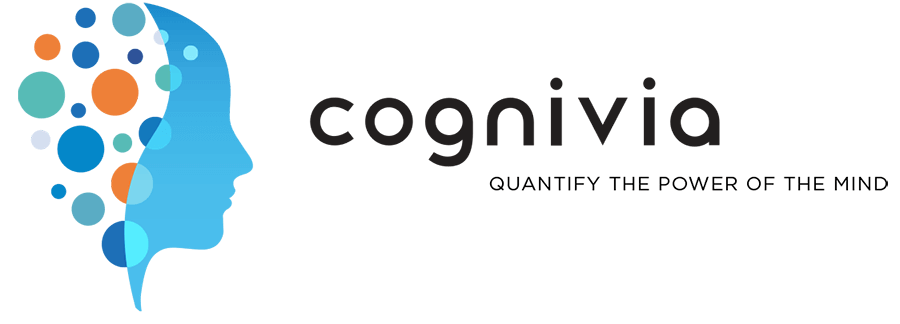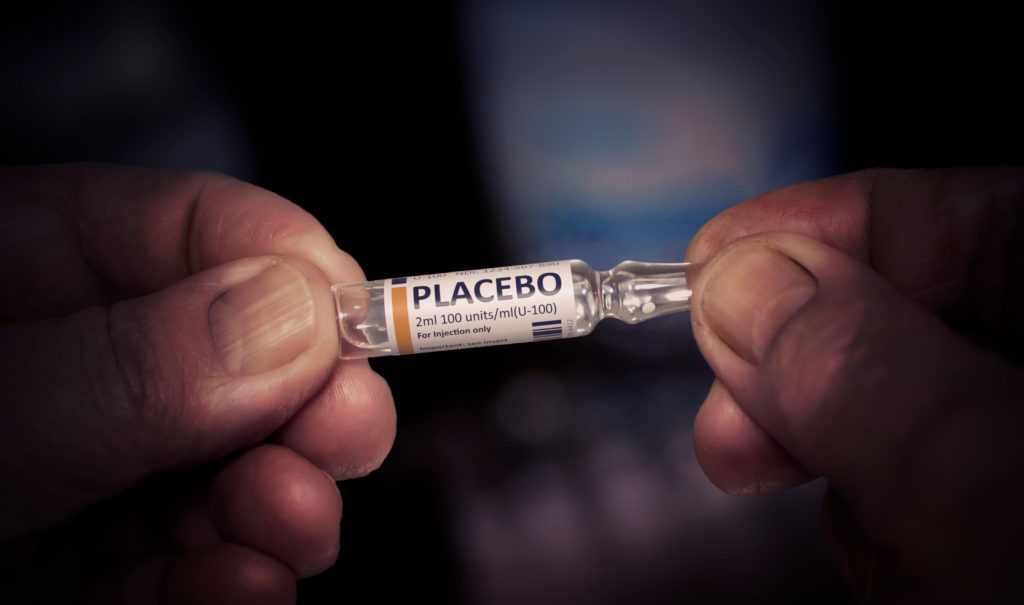Phase II and III trial failure due to unexpectedly large placebo response rates is still all too common. In this blog, we explain what this means and how clinical trials can better manage the placebo response.
The gold standard in drug development is randomized, placebo-controlled trials. In these trials, one group (or more) receives the active treatment while the other receives a placebo in a parallel path.
This design provides the strongest possible evidence that the efficacy of the experimental therapy is causally related to the therapy itself. This is because, at the end of the trial, drug developers can measure the improvement of patients in the active group versus the placebo group. Theoretically, treatment with a successful drug will result in more significant improvements in the active group than the placebo group.
But even though there is no active treatment in the placebo group, several things are happening that can also seem like improvement:
- Natural course of the disease over the trial period
- Placebo response
- Regression to the mean
- Patient reporting errors
This is why statistical analysis in a clinical trial is so important—and complex. Even in the placebo control group, where patients are receiving no real treatment, they often experience real clinical improvement, making it difficult to differentiate drug efficacy. In other words, high placebo response doesn’t necessarily mean the treatment doesn’t work—but it can make it difficult to detect the true treatment effect.
And that’s a problem. Indeed, many otherwise effective drug treatments fail in Phase II or III trials because of this issue.
To fix it, clinical trials need to manage the placebo response—a very difficult variable to quantitatively account for.
What is Placebo Response?
Placebo response is the measured improvement of a patient in a clinical trial after receiving a sham treatment rather than from the treatment itself.
What causes the placebo response? A number of factors contribute to it, as well as influence the magnitude of an individual’s placebo response. These include:
- Study design
- Contextual factors: For example, the physician-patient relationship can influence the patient’s perception of the study and expectations of the drug treatment.
- Geography and culture: Certain cultures across the world have a varying tolerance of symptoms (like pain), which creates variations in the magnitude of symptom reporting.
- Demographics: Different age groups, genders and other demographics also report symptoms differently.
- Placebo effect: A biopsychological phenomenon that induces a change or perception of change in a patient’s symptoms when administered a sham treatment.
Placebo response is entirely individual, but often measured (and managed) holistically. Here’s what clinical trials do now—and what can be done differently to ensure better results.
How Do Clinical Trials Manage Placebo Response?
When clinical trial statisticians design a trial, they assume an expected placebo response rate based on historical experience or literature values. So, a larger than expected placebo response can lead to a failed or inconclusive trial, risking a repeat or even abandoned program.
The placebo response problem isn’t anything new. For years, the biopharmaceutical industry has spent millions attempting to reduce the risk of trial failure. Let’s briefly examine two of the biggest strategies.
- Optimizing Study Design
To counter the placebo response caused by study bias, clinical trials may, for example, use a placebo lead-in phase to identify placebo responders before allocating study treatments.
This can also look like adding additional treatment arms to the study and optimizing protocols to ensure that the right clinical data are collected for the trial.
Certain aspects of the study may also be addressed before the patient is even enrolled; for example, staff are selected and trained to optimize the patient’s experience and control expectations. They can be trained to only use specific, neutral words and phrases in order to not heighten patient expectations.
- Patient Training
Once patients are enrolled into the optimized study, they may be trained patient to reproducibly and reliably report their symptoms before the study actually begins. The key is to help patients learn how to report their symptoms more accurately.
Unfortunately, these strategies are becoming increasingly complex, expensive and more burdensome on the investigative sites (and patients). Plus, these two approaches – while helpful to a point – only account a portion of the placebo response: The external influences. What about the factors that relate to the individual patient, like demographics and the placebo effect?
An Individual Phenomenon
Typically, the magnitude of the placebo response is seen as a phenomenon of the placebo group. While the traditional strategies to reduce components of placebo response are helpful and should be continued, they are missing a key element: The individual response.
It’s time to start thinking about the placebo response in a different way. Instead of focusing on how the placebo group of a clinical trial responds to the placebo, we need to study the placebo response of individual patients – because every patient is different.
What does this look like?
Well, clinical trials need a way to incorporate individual patient placebo responsiveness into their statistical analyses. As previously mentioned, this has historically been difficult to quantify. But today, it can be done. Here’s how.
How to Predict Placebo Responsiveness
It starts with assessing patient psychology.
While patients provide other clinical data at the beginning of a study, they can also take a validated questionnaire that measures personality traits, expectations and other individual factors.
Then, combining those questionnaire results with additional data and a trained algorithm, you can calculate a relative placebo responsiveness score for each patient. (Luckily, we already have a proprietary algorithm that can do this.)
Finally, you can then use this score in your statistical analysis of the clinical trial.
This new context will help you manage data variability related to the placebo response – thus improve your ability to demonstrate statistically significant differences in outcomes between trial groups and increasing study power.
Placebell©™ is a proven solution for assessing patient psychology, calculating placebo responsiveness and defining covariates in a statistical analysis. Powered by advanced machine learning models, the Placebell approach poses no mathematical or operational negative impact on your trial or data.
Improve Phase II and III trial success by reducing data variability caused by the placebo response – with Placebell. Contact us to learn more.





